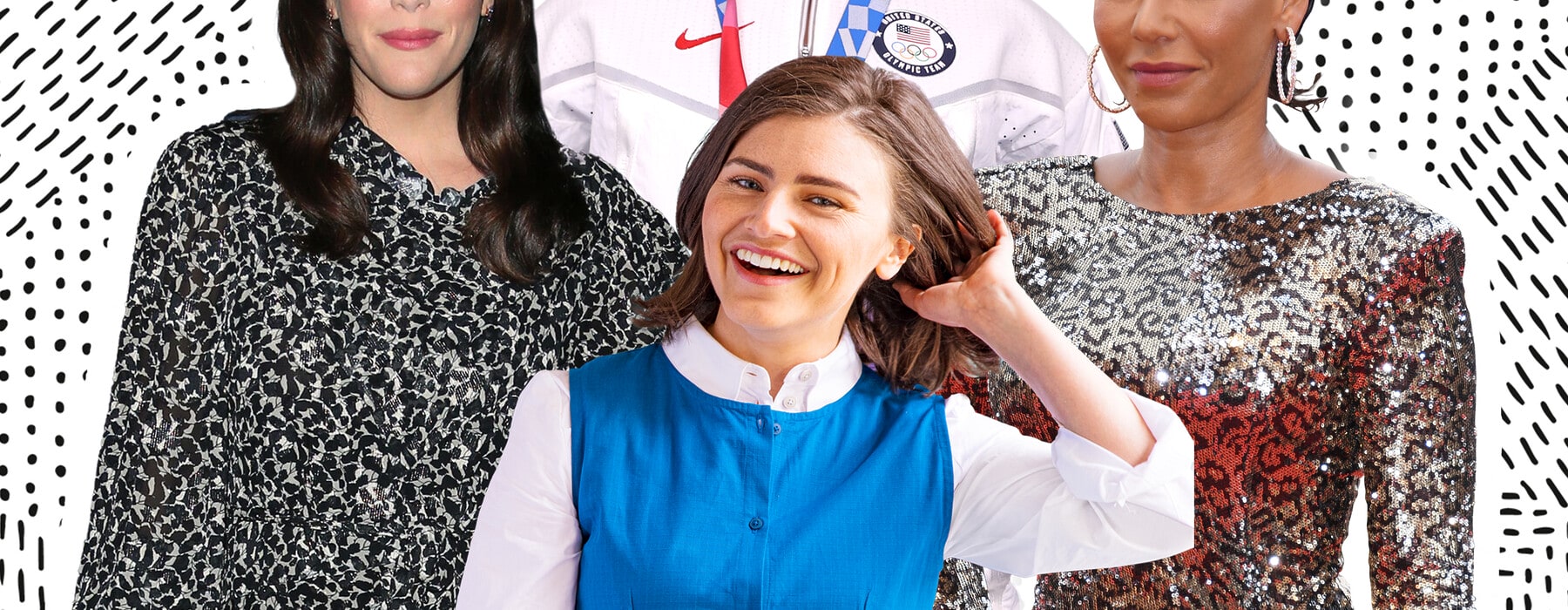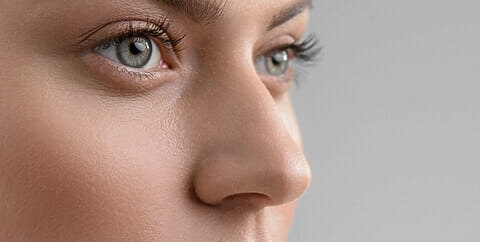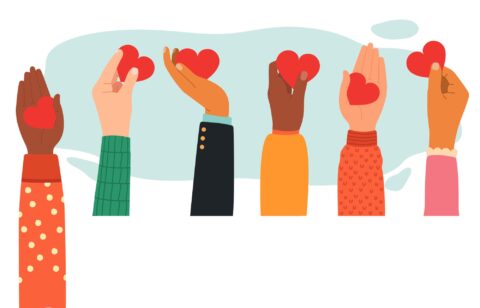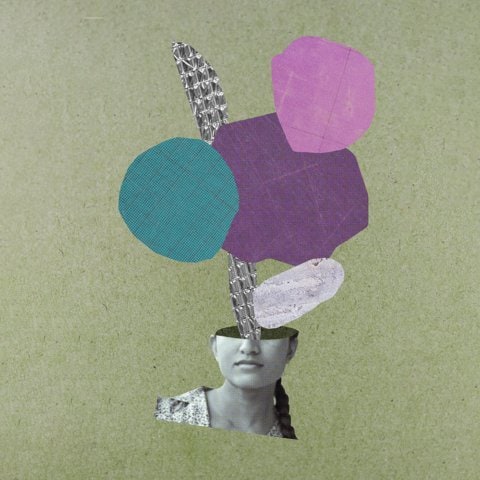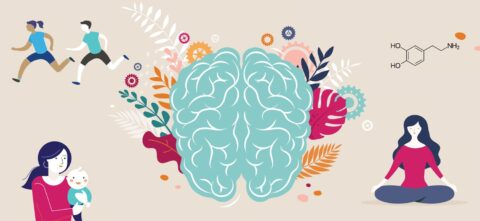Impulsive? Disorganised? Easily distracted? Attention deficit hyperactivity disorder is a condition usually associated with young boys. But a new generation of women are belatedly getting a diagnosis – and finally making sense of their lives.
When Charlotte Mia, 28, was studying graphic design at the University of Plymouth, she always set out to hand in her work on time, but she’d get diverted. First, she’d chat to other students and get caught up in their amazing projects. Next, she’d have an urge to pour a glass of water, open a window, tidy her room – all important for a good working environment, or so she told herself. Finally, despite her best intentions, she’d give up and go out.
There were other struggles. She’d forget to go to lectures or to plan meals. “I ate a lot of instant food, like noodle pots,” Mia says now. She’d lose her keys again and again and had real difficulty remembering to pay her rent. “Everyone else seemed to be managing completely fine, but for me it was so much harder and I didn’t know why.” She googled “memory loss”. She felt a failure and drank “far too heavily”.
A saving grace was meeting Jess Joy, 28, who was studying fine art at Plymouth College of Art. Like Mia, she was battling headwinds that were limiting her potential. “I’d always leave things to the last minute,” she says now. “I desperately wanted to manage, but always felt I was playing catch-up. I struggled a lot in my first year. My mental health was in an absolute state.” She had insomnia, hardly left her room, couldn’t be bothered to shower.
The two became close friends. “We’d sneak off early from nights out and go and sit in my room in the dark trying to wind down,” says Mia. “We tried to fit in and make friends, but the environment was just so loud and overwhelming.”
In 2018 they were still working out their place in the world, wondering if a “normal” life would ever be attainable. Mia had a job as a graphic designer in Brighton. She’d worked there for two years and was part of a small team. “But my mum got ill and my five-year relationship ended, and I started to turn up late, miss emails, make careless mistakes.” Joy was in a similar position. She’d been “let go” from her office job. She now finds the idea that she could fulfil an admin role “laughable”.
One evening, Mia called Joy. They each sat on their respective sofas, crying. They discussed Twitter posts to cheer themselves up. One account struck a chord: Black Girl, Lost Keys. They spent the next few days on Twitter researching. It all started to click into place.
Joy and Mia have ADHD: attention deficit hyperactivity disorder. Mia was shocked: “I didn’t know women or girls could have it.”

ADHD is a cognitive disorder rooted in a disruption of the self-management system of the brain – the part that allows us to organise, plan, focus, as well as manage emotions. There are three subtypes: hyperactive and impulsive, inattentive, or combined.
ADHD is different for each person, but the main symptoms include difficulty starting and finishing tasks; being disorganised and distracted easily; losing things; zoning out of conversations; impulsivity; time blindness. Children and adults with ADHD are often exquisitely sensitive and feel emotions intensely. Some are hypersensitive to touch, sounds, light, even tags on clothing. The condition has nothing to do with intellectual ability. People with ADHD often have high IQs. Many are exceptionally creative, charismatic and think outside the box. They also have an uncanny ability to “hyperfocus” on things that really grab their interest.
But fitting into a complex world that rewards concentration and focus can be lonely and hard. ADHD is associated with poor educational performance, difficulty finding and keeping stable employment, higher divorce rates, traffic accidents, substance misuse, criminality. It often comes with a side order of depression and anxiety. Adults with ADHD are much more likely to have attempted suicide than those without, according to research published in 2020.
“It should be taken very seriously,” says Dr Rob Baskind, a consultant psychiatrist and specialist in adult ADHD. “It is very debilitating, particularly if undiagnosed.” Which is why early intervention is key. “It’s often a fairly straightforward condition to treat,” he says – ADHD responds well to stimulant medication.
And yet it is often thought of as a “condition that’s not valid at all”, says Baskind. The government doesn’t formally record figures for ADHD, as it does for autism, a neurodevelopmental disorder that is a lot like ADHD in many respects, and is actually less common. Autism has a prevalence rate of 1-2 per cent; ADHD at least 2.5 per cent. ADHD isn’t recognised by the Department for Education as a primary need in the same way as dyslexia and autism spectrum condition, and as a result teacher training doesn’t always include ADHD. Nor is it mentioned in the NHS Long Term Plan, a ten-year-blueprint for care published in 2019. Autism and learning disabilities, however, are highlighted.
“People think ADHD only exists in naughty boys,” Baskind explains. In other words, it’s a behavioural problem. In fact, it’s a biological and cognitive disorder you are likely to have been born with. Scientists estimate that ADHD is about 70 per cent inheritable. This puts it up there with traits such as blood pressure, height and weight.
So why is the kind of person who has ADHD assumed to be male and under ten? Because the manual that experts first used to diagnose ADHD in the early Eighties was mainly based on studies of boys. “If you’re using mostly boys to define the diagnostic criteria, and you are then using the diagnostic criteria to define who has ADHD, you’ll be finding mostly boys,” says Dr Joanna Martin, a specialist in ADHD at Cardiff University.
Girls, experts suggest, are more likely to have the inattentive subtype, in other words, appear dreamy and scatterbrained – qualities which, of course, are perfectly acceptable for girls and don’t ring alarm bells in any obvious way. Women also talk of hyperactivity being internal – having 1,000 different ideas crowding in your head at the same time. A fidgety brain, rather than body. “But parents and teachers can’t observe a child’s hyperactive thoughts,” says Martin. “The question is: can a child sit still and concentrate?”
Testing has since evolved, particularly for adults. The first diagnostic and statistical manual for grown-ups was published in 2013. “Before that, experts thought ADHD was something you grew out of,” says Rebecca Champ, a psychotherapist and ADHD coach. Nevertheless, “emotional dysregulation” – extreme mood swings, a symptom experienced by a lot of women – is still not part of the diagnostic criteria.
“We know there are girls who are not getting diagnosed who should be,” says Martin. According to her studies, between three and four boys have ADHD for every girl. But in treatment clinics the rate is higher: seven to eight boys for every girl. “That suggests girls are not getting to the clinics, not getting referred, not getting diagnosed. Girls are not getting the treatment and support in school that they need.”
The upshot is that girls are missing out, and so, it follows, are women. “It means women have no idea they have ADHD – they have never associated their struggles with ADHD and neither have clinicians,” says Michelle Beckett, 49, the founder of the charity ADHD Action, who was diagnosed with ADHD five years ago. “I went through decades with potential I couldn’t quite realise. You think, ‘Am I just a rubbish adult?’ I struggled with depression and anxiety. I’ve been suicidal. And it was ADHD all along.” She spearheaded the first all-party parliamentary group to raise awareness of ADHD in 2018. “It should be an emergency, given the impact on so many areas of life, but in actual fact, women and girls are under the radar and the quality of their lives is suffering.”
Lucy Clement, 42, is a GP who lives in Leeds with her husband, Chris, 43, an electrical engineer, and their two children, Daisy, 11, and Max, 9. She did well at school. “My mum and dad are teachers, very structured people, and they also knew how education worked. My mum gave up work for seven years bringing up me and my brother and she was completely devoted to us.” She was reading at two, “flew” through primary school, “loved” secondary school. Looking back, she says her success was the product of a restless mind. “I have this constant need to feed my brain.”
Things started to unravel when she went to read medicine at the University of Liverpool in 1997. “I went from being the biggest swot in the entire world to the least disciplined person ever. I absolutely could not prioritise work over play. I did hardly any work at all.” Her room was a “disgusting” mess, she says. “I even bought a double bed once, just so I could put stuff on one side and sleep on the other.”
She failed her first year exams. “I’d never failed an exam!” She blamed her parents. “I said, ‘You didn’t make me independent enough. It’s your fault I went wrong at university.’ ” She resat her exams, passed, and went on to graduate and qualify as a GP in 2013.
She met her husband in 2007. “He realised I was this quite scatty girl who lived each day as it came. I think he enjoyed that. I was spontaneous, fun. He couldn’t believe he’d met this high-earning person who had no savings. I’d spend it! I’d go out and eat and have fun.”
Clement bought a house in 2005. Three years later, Chris moved in. “He’d get exasperated. Why are you still on the same insurance policy and paying loads of money? Why is your tax disc out of date? Why haven’t you paid these bills? Why aren’t you opening your post? I was so overwhelmed by bills, I didn’t open the post until a red one came through. I knew I had to open that one because it would say ‘final warning’.”
Daisy was born in 2010; Max in 2012. Clement went back to work part-time: three days as a GP, two at home. “I love my job and I could do that fine, no problem. And yet at home I couldn’t keep anything tidy. I was the most disorganised mum. Always the one forgetting nappies and raincoats. I wouldn’t think, ‘We need to eat tonight; I’d better get something out of the freezer.’ I’d get to five o’clock and go, ‘Argh! We need to eat!’ Luckily, there’s a Co-op around the corner. I’d go there and give them a sandwich.”
By 2017, when she was 37, both her children were at school full-time. “I thought, this is the moment I’m going to become the perfect housewife. No excuses now. Oh my goodness, I hated my days off. I’d look around me and get so overwhelmed. No matter how hard I tried, I couldn’t get on top of stuff.
“I’d get to the point where I’d look around and go, ‘What am I doing? How do I finish this?’ And what I’d do is run a bath. I’d feel calm, feel the warmth. You can’t do anything when you’re in the bath. And that would happen most days when I was off. About one or two in the afternoon, I’d get in the bath.”
She bought self-help books and devised programmes. “But I couldn’t sustain it. It would all go wrong again and I’d feel really rubbish about myself.”
In 2017 she was assigned a life coach through an NHS scheme to support primary care workers. “It’s meant to be about leadership, but I kept talking about my kitchen cupboards. I remember saying other people seem to be able to do things as easily as they can breathe.” Be organised, plan, structure a day, create a routine. “And I just couldn’t.”
In January 2019, when she was nearly 40, she signed up for NHS England’s Supporting Mentors Scheme, where experienced GPs support more junior doctors. Clement was paired with Adrian, an established GP. “In the first meeting he said, ‘The interesting thing about me is I have ADHD.’ I was like, ‘Oh, really.’ I wasn’t at all interested.”
She was more worried about her brain and why she was so forgetful. In the fourth session, after a particularly difficult week, she broke down. “What’s wrong with me?” she asked. Adrian suggested she had ADHD. “He made me do a questionnaire then and there and I just burst into tears. I carried on reading about it that evening, and I haven’t stopped reading about it since. I had this enormous penny-dropping moment. I spent the whole week looking back on my life with this new lens, either laughing or crying.”
She was formerly diagnosed three months later. “People said, ‘ADHD can’t be that bad. You’re a GP.’ I’m lucky. My job works. It’s a very good job for someone with ADHD. My appointments are organised for me and each interaction is different.” She admits she finds it hard to retain facts, such as the names of the bones in the foot (“I google!”) and keep on top of paperwork, “But so do a lot of GPs.” She compensates by working late. She points out that good GPs recognise patterns – are able to examine the body and pick out the key symptoms and put the puzzle together. “And my visual brain is very good at doing that.” Her patients also benefit from her “hyperfocus” and lateral thinking.
“Some could argue my ADHD is mild,” she continues. “But come to my house. Try to get in my car. Don’t go in my handbag. Don’t come in my brain. You really don’t want to be in here. “I’m a happier person since the diagnosis. I totally understand myself now.” When dealing with ADHD, women are also battling society’s expectations. “We’re not supposed to be bad at washing up or forget people’s birthdays,” says Beckett. This is why “the shame and damage to self-esteem is particularly acute in women”. Clement agrees. “My husband does most of the cooking, all the cleaning, all the washing. I’m quite proud and very grateful.” But at times she feels “de-skilled” and that is a bit of a problem. “If it was the other way around, nobody would question it.
“Successful men may get away with ADHD better than women,” she suggests. “People organise their diaries and write up minutes, leaving them to shine in meetings. And then they come home to a nice, organised house with their very able wife, juggling gazillion things, and dinner is on the table.”
What further compounds the difficulties for women with ADHD is hormones. One of the trademarks of ADHD is low levels of dopamine, the “feel-good” chemical manufactured in the brain that appears to play a major role in things like attention and inhibition. When you tackle a difficult task or pay attention to a complex social situation, you are essentially generating dopamine in the parts of the brain that deal with higher cognitive tasks. (Most ADHD medication works by enhancing the impact of dopamine in the body.) Alongside this, women’s brains are affected by hormones. Oestrogen, for example, produced in the first two weeks or so of a woman’s monthly cycle, is a dopamine booster. Progesterone, which surges in the third and fourth weeks, suppresses the effects of oestrogen, and consequently dopamine. However, to an ADHD brain that needs more dopamine, the depressing effect can be intensified. “Fluctuating hormones can make ADHD symptoms significantly harder to manage,” says Beckett.
There is another, deeper implication for women. Impulsivity, a common symptom of ADHD, can lead to “sexual risk-taking” according to studies – in other words, unprotected sex, which can result in unwanted pregnancies and sexually transmitted diseases.
But things are changing. More women are going public with their ADHD symptoms, including Simone Biles, Liv Tyler, Mel B and Erin O’Connor. Since Baskind launched an adult ADHD service in Leeds in 2011, the number of NHS clinics for adults with ADHD in the UK has increased. “We are seeing referral rates increase and that demonstrates we are cutting through with other medical professionals and also members of the public,” Baskind says. Three years ago, the clinic had 40 referrals a month; now, it’s 40 a week. The problem now, of course, is waiting times. At the Leeds clinic it’s 15-18 months. In some parts of the country, it reportedly takes five years to be seen.
Consequently people turn to the private sector. “People go out of desperation. They are very much not the usual individuals seeking private healthcare,” says Baskind. It can cost £1,200 for an assessment and hundreds more for follow-up consultations.
“There has been a big increase in private providers over the past few years and that is concerning,” Baskind says. “The more providers you have, the more difficult it is to monitor what’s going on out there, and to have a consistent system to transfer people back into the NHS.”
Bianca Faricy, 48, lives in Brighton with her partner, John, 44, a musician. Outwardly she’s a success: an art teacher for 23 years and head of department for 10 years at a local secondary school. Inwardly, she sometimes felt like she was having some kind of breakdown.
“I didn’t know what was wrong with me,” she says. “People always made jokes about me forgetting things, tipping things over,” she explains. When she came home from work her partner would say, “Just to let you know, you left the hob on, the iron on and your keys in the door.” She was dogged by brain fog and exhaustion. She describes life as “micro-pockets of shame from making mistakes and not being able to do things”. She was, by turns, diagnosed with candida and depression, and was in therapy for seven years.
One day in the early winter of 2020, a letter arrived from her cousin, who works in special educational needs. It was a newspaper article about a woman who’d been diagnosed with ADHD in her late thirties. “It hit me like a bus. It was like reading my diary word for word. My head has been chaos all my life. I just thought it was normal.
“‘Everyone feels a bit ADHD,’ friends would say. And yes, most people at some point will feel disorganised, overwhelmed, burnt out. But with ADHD, you experience them all the time. That’s the weight of it. It’s profound.”
Within three weeks of reading the article she had a diagnosis and a prescription for stimulant medication. “I was lucky to have some PPI [payment protection insurance] money. It’s changed my life. I can focus, I am motivated, feel clearer-headed.”
Now she wants to improve the lives of those in her classroom. As improbable as it might seem, she used to mistake ADHD for naughtiness. She has a timer – “You can’t have opened-ended tasks” – and fidget toys: plastic cubes and bike chains fixed in a loop. “I give them something to fidget with. That has been transformative.
“Students need to be understood, not told off,” she says. “There needs to be less focus on compliance and more focus on child-centred education, wellbeing and personal development.”
In October 2020, Charlotte Mia and Jess Joy set up I Am Paying Attention, an online platform for people with ADHD and/or autism. Billed as “the badass neurodivergent community”, it offers advice, diagnosis manuals, “anti-planners” (a dig at those who suggest that all you need to get organised and put life on track is a diary).
Membership costs from £3.99 to £7.99. They have 1,000 members and 78,000 followers on Instagram, and sell at least £100 worth of guides a day.
Under the banner of neurodiversity they are declaring their ADHD a rich identity, even if it comes, says Joy, “with a healthy splash of trauma”.
“The way we work takes our ADHD brains into consideration,” she explains. “We work whenever we feel like working. There might be one week in the month when we work extremely hard and produce lots. At other points, we produce significantly less.” They share their menstrual cycles.
“I feel really sad for people like me who have grown up resenting themselves or completely lacking in confidence. My generation feel very strongly about spreading awareness, educating people and being a lot less apologetic about who we are. I’d really love people to see it as less of a deficit.”
For more information on ADHD, visit:
psychology-tools.com/test/adult-adhd-self-report-scale
addadult.com/adhd-treatment-in-new-zealand
mentalhealth.org.nz/groups/group/adhd-nz-national-support-adults
THIS ARTICLE FIRST APPEARED IN THE TIMES BY SALLY WILLIAMS. REPRODUCED UNDER LICENCE.

